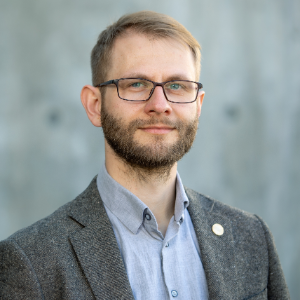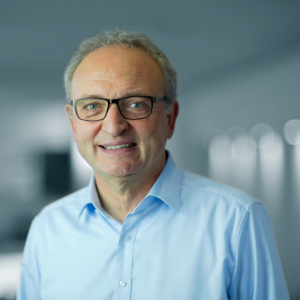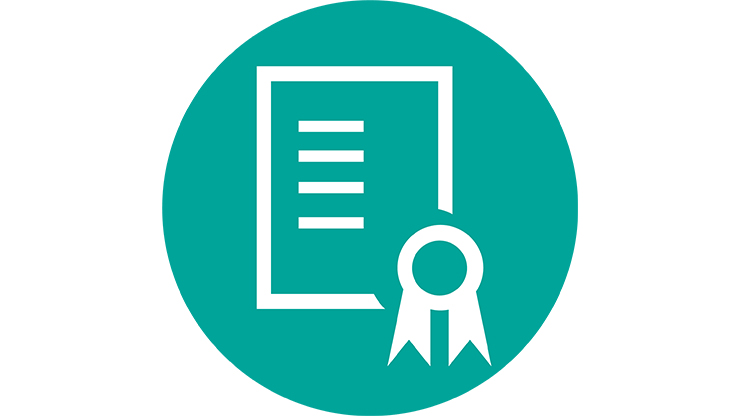2025 October Prize Spotlight
Congratulations to the SIAM prize recipients who will be recognized at the 2025 SIAM Conference on Mathematical & Computational Issues in the Geosciences (GS25), taking place October 14-17, 2025 in Baton Rouge, Louisiana, United States.
- Jakub W. Both - 2025 SIAM Activity Group on Geosciences Early Career Prize
- Rainer Helmig - 2025 SIAM Activity Group on Geosciences Career Prize
Jakub W. Both
Dr. Jakub W. Both, University of Bergen, is the recipient of the 2025 SIAM Activity Group on Geosciences Early Career Prize. Dr. Both received the award “for his broad contributions to several aspects of mathematical issues in the geosciences, in particular for his generalization of alternating minimization methods to non-smooth and non-convex problems as encountered for instance in poroelasticity.” He will deliver a prize lecture on Wednesday, October 15 at 11:15 a.m. CT.

The SIAM Activity Group on Geosciences Early Career Prize is awarded every two years to one individual in their early career in the field of geosciences for distinguished contributions to the field in the three calendar years prior to the award year.
Dr. Both is an applied mathematician and permanent researcher in the porous media group within the mathematics department of University of Bergen. He received double MSc degrees in mathematics and computational engineering science from RWTH Aachen University, and a Ph.D. in applied mathematics from the University of Bergen. His research bridges numerical methods for flow and coupled multiphysics in porous media, image-based data analysis, and mathematical modeling, with applications in geological CO₂ storage and geothermal energy.
Dr. Both has been a SIAM member for seven years and currently serves as Chair of the Norwegian Chapter of Interpore, where he is dedicated to community-building. His work on coupled problems and poromechanics has been recognized through a nomination for the European Community on Computational Methods in Applied Sciences (ECCOMAS) Ph.D. Award and the distinction of receiving the ECCOMAS Ph.D. Olympiad. He currently leads an interdisciplinary early career project on CO₂ storage, integrating experimental reservoir physics and simulation. Learn more about Dr. Both.
Q: Why are you excited to receive the award?
A: I’m deeply honored to receive the SIAM Activity Group on Geosciences Early Career Prize. At this stage of my career, it’s one of the most meaningful recognitions I could hope for – especially coming from a community that has shaped my scientific identity. The SIAM Activity Group on Geosciences has been a source of inspiration and belonging throughout my career since my early days of my Ph.D. Being listed among previous recipients, whose work I greatly admire, makes this recognition feel both humbling and motivating.
Q: Could you tell us about the research that won you the award?
A: My research explores the interplay of gradient flow structures and block-partitioned solvers for coupled problems, particularly in geomechanics. These structures reveal how dissipative physical systems can be described through energy minimization principles, offering a powerful mathematical lens for both algorithm design and analysis. Throughout my Ph.D., I investigated how such structures emerge in poroelasticity and extended them to more complex multiphysics settings. By identifying convex minimization formulations at the continuous level, I developed a unified framework for analyzing and designing iterative decoupling schemes – based on alternating minimization – that yield robust and efficient solvers. This approach enables sharp convergence estimates and algorithmic simplicity across a wide range of coupled problems.
Q: What does your work mean to the public?
A: Understanding how fluids and energy move through the subsurface is essential for tackling challenges like CO₂ storage, geothermal energy, and soil remediation. These processes are governed by complex, coupled physical phenomena. My work contributes to making these systems more predictable and computationally tractable – by analyzing the mathematical structure of physics-based models and using that insight to design efficient solution algorithms. This helps build reliable simulation tools that support decision-making in climate and energy applications.
Q: What does being a member of SIAM mean to you?
A: I’m proud to be a member of SIAM and part of a community that values both mathematical depth and computational innovation. SIAM conferences are among the most important gatherings in my field, and I always look forward to them. Working in a highly interdisciplinary area, it’s especially valuable to connect with fellow mathematicians to exchange ideas and reflect on major advances. SIAM provides that space, where rigorous mathematics meets real-world relevance. The SIAM Activity Group on Geosciences has felt like a scientific home since the beginning of my career and continues to be a source of inspiration and belonging.
Interested in submitting a nomination for the SIAM Activity Group on Geosciences Early Career Prize? The prize next opens for nominations on May 1, 2026.
Rainer Helmig
Dr. Rainer Helmig, University of Stuttgart, is the recipient of the 2025 SIAM Activity Group on Geosciences Career Prize. Dr. Helmig received the award “in recognition of his groundbreaking contributions to the mathematical and numerical modeling of multiphysics surface and subsurface fluid dynamics. His visionary research and enthusiastic leadership have not only advanced the field but also profoundly influenced the careers of multiple generations of geoscientists worldwide.” He will deliver a prize lecture on Wednesday, October 15 at 8:10 a.m. CT.

The SIAM Activity Group on Geosciences Career Prize is awarded every two years to an outstanding senior researcher who has made broad and distinguished contributions to the field of geosciences.
Dr. Helmig is Professor Emeritus of the Department of Hydromechanics and Modelling of Hydrosystems at the University of Stuttgart, Germany. He earned his doctoral degree from the University of Hannover (1993) and completed his Habilitation at the University of Stuttgart (1997). He held a professorship at the Technical University of Braunschweig (1997-2000) before returning to Stuttgart. He has played a leading role in numerous research initiatives, serving as spokesman of the International Research Training Group “NUPUS - Nonlinearities and Upscaling in Porous Media” (2007-15) and of the Collaborative Research Centre 1313 “Interface-Driven Multi-Field Processes in Porous Media: Flow, Transport and Deformation” (2018-23). He was also a co-founder of InterPore and served as its President (2009-11).
Dr. Helmig has been a SIAM member for 27 years, and his contributions have been widely recognized. He received the Dresdner Grundwasserforschungspreis for his doctoral thesis (1995), the AGU Fellowship by the American Geophysical Union (2020), and the Honorary Degree of Doctor of Engineering from Heriot-Watt University (2022). In 2025, he was awarded the Kimberly-Clark Distinguished Lectureship. He also served on the Executive Board of Directors of the Cluster of Excellence Simulation Technology at the University of Stuttgart (2007-18) and is a member of the Academy of Sciences, Academia Europaea, Heidelberg, and acatech – National Academy of Science and Engineering. Learn more about Dr. Helmig.
Q: Why are you excited to receive the award?
A: It is a great honor to have my work, and therefore my collaborators, recognized with this career prize. I have been very fortunate to work with so many great students, postdocs, and collaborators who have allowed me to expand my research contributions over the years. As someone who has spent his career between applied mathematics, engineering, and geosciences, it is especially rewarding to be recognized with an award that specifically targets interdisciplinary work between mathematics and geo-engineering.
Q: Could you tell us about the research that won you the award?
A: Flow and transport phenomena in porous media are the governing processes in many environmental, industrial, and bio-medical systems. In environmental systems, such complex processes include the flow of oil, gas, and water in subsurface reservoirs. Examples can be found in CO₂ sequestration, geothermal power production, and the potential mobilization of methane in gas hydrates. Other cases include the flow of organic liquids in contaminated soils, the storage of green gas (methane or hydrogen from renewable sources via power-to-gas), and the containment of nuclear and other hazardous waste. All these processes are complex, nonlinear, coupled, and controlled in one way or another by interfaces. In an interdisciplinary team with international partners, we have developed hybrid multi-scale and multi-physics multi-phase flow and transport models that capture the strongly coupled processes, and thus provide the means to carry out comprehensive analyses and predictions for the questions listed above.
Q: What does your work mean to the public?
A: The scientific focus of our work is on the understanding and modeling of coupled multiphase fluid, gas, solute, and heat transport in complex subsurface systems such as heterogeneous sediments or fractured rock. This includes the development of thermodynamically consistent model concepts and their transfer to robust and efficient numerical schemes. These models are applied to environmental problems such as the remediation of contaminated sites, CO₂ storage, and underground energy storage; the impact of these applications on groundwater is also a research focus. In recent years, the issue of incorporating different spatial and temporal scales into modeling has become increasingly important.
On one hand, the focus is on the development of simpler, faster upscaling approaches, and on the other, the interpretation of the influence of dynamic effects on the two-phase flow behavior in porous media. In the last five years, the modeling and analysis of soil moisture processes in the subsurface and, in particular, the influence of evaporation and salt precipitation in groundwater has also become a central research topic. The results of the research work are employed not only in the field of geohydrology, but they are also used to an increasing extent for technical and biomechanical problems. For example, water management in fuel cells or modelling the transport of cancer therapeutics in the lung.
Q: What does being a member of SIAM mean to you?
A: I am passionate about using mathematics and engineering to develop new solutions to the world's environmental problems. As the first person in my family to attend a university, I am also passionate about teaching, mentoring, and training the next generation of interdisciplinary problem solvers. SIAM's open-minded and interdisciplinary community is an important part of my professional realization of these passions. There are so many things I like about SIAM: the way people from different disciplines come together, without old-fashioned disciplinary walls; the way people from academia, industry, and government/national labs come together; and the commitment to fostering the next generation of researchers and practitioners. As an interdisciplinary researcher in my early days, I often felt like I didn't really fit in anywhere. I am very grateful that I found SIAM and that it has become such an important part of my professional life.
Interested in submitting a nomination for the SIAM Activity Group on Geosciences Career Prize? The prize next opens for nominations on May 1, 2026.
Related Reading



Stay Up-to-Date with Email Alerts
Sign up for our monthly newsletter and emails about other topics of your choosing.



